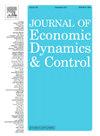保险需求与政府干预之间的Stackelberg均衡策略
IF 2.3
3区 经济学
Q2 ECONOMICS
引用次数: 0
摘要
本文研究了巨灾风险管理中保险需求与政府干预(事前保费补贴和事后救助)之间的Stackelberg均衡策略。我们开发了一个连续时间框架,其中投保人的损失遵循复合泊松过程,整合了双重政府机制来分析它们之间的相互作用。通过求解(扩展的)Hamilton-Jacobi-Bellman (HJB)方程,推导出均值-方差偏好下投保人的均衡保险策略,并对政府支出政策进行优化。首先,我们证明了补贴和救济对风险留存的影响是相反的:较高的补贴倾向于降低留存,而由于预期的灾后补偿,救济期望的增加会激励留存。具体而言,在线性救济函数的框架内,我们描述了补贴相对于救济系数的相对增长率,以确保保费补贴对保留水平的影响要么占主导地位,要么被救济支付的影响所主导。其次,对于平均剩余寿命(DMRL)下降的风险,我们根据灾害概率和救济趋势,在比例或截断救济结构下推导出封闭形式的最优补贴方案。第三,我们创新地证明了成本最小化救济函数采用相对于保留前索赔的比例形式,与联邦应急管理局的援助上限等经验实践相一致。第四,在投保人优化框架中探索了对损失增加和救济概率模糊的情景的扩展,证明了与静态期望效用结果的鲁棒性和一致性。此外,我们分析了政府在考虑投保人福利约束条件下的最优策略,并对不同干预情景下的社会福利进行了综合评估。我们的工作通过量化补贴和救济之间的权衡来推进政策设计,为增强社会韧性提供可操作的见解。政府可以在战略上平衡干预措施,以稳定保险市场,减轻财政风险,并激励积极主动的风险管理。本研究在动态风险模型下,将理论严密性与实际关联性相结合,为优化公私巨灾风险分担机制提供了一个全面的框架。本文章由计算机程序翻译,如有差异,请以英文原文为准。
Stackelberg equilibrium strategies between insurance demand and government interventions
This paper investigates Stackelberg equilibrium strategies between insurance demand and government interventions—ex ante premium subsidies and ex post disaster relief—in catastrophe risk management. We develop a continuous-time framework where policyholders' losses follow a compound Poisson process, integrating dual government mechanisms to analyze their interplay. By solving (extended) Hamilton-Jacobi-Bellman (HJB) equations, we derive equilibrium insurance strategies for policyholders under mean-variance preferences and optimize government expenditure policies. First, we demonstrate that subsidies and relief have opposing effects on risk retention: higher subsidies tend to reduce retention, whereas increased relief expectations incentivize retention due to anticipated post-disaster compensation. Specifically, within the framework of a linear relief function, we characterize the relative growth rate of the subsidy relative to the relief coefficient to ensure that the effect of the premium subsidy on the retention level either dominates or is dominated by the impact of the relief payment. Second, for risks exhibiting decreasing mean residual life (DMRL), we derive optimal subsidies in closed-form solutions under proportional or truncated relief structures, depending on disaster probability and relief trends. Third, we innovatively prove that the cost-minimizing relief function adopts a proportional form relative to pre-retention claims, aligning with empirical practices such as FEMA's aid caps. Fourth, extensions to scenarios with loss-increasing and ambiguous relief probabilities are explored within the policyholders' optimization framework, demonstrating robustness and consistency with static expected-utility results. Additionally, we analyze the government's optimal strategy when incorporating policyholders' welfare constraints and conduct a comprehensive social welfare assessment under various intervention scenarios. Our work advances policy design by quantifying the trade-offs between subsidies and relief, providing actionable insights for enhancing societal resilience. Governments can strategically balance interventions to stabilize insurance markets, mitigate fiscal exposure, and incentivize proactive risk management. This study bridges theoretical rigor with practical relevance under dynamic risk models, offering a comprehensive framework for optimizing public-private catastrophe risk-sharing mechanisms.
求助全文
通过发布文献求助,成功后即可免费获取论文全文。
去求助
来源期刊

Journal of Economic Dynamics & Control
ECONOMICS-
CiteScore
3.10
自引率
10.50%
发文量
199
期刊介绍:
The journal provides an outlet for publication of research concerning all theoretical and empirical aspects of economic dynamics and control as well as the development and use of computational methods in economics and finance. Contributions regarding computational methods may include, but are not restricted to, artificial intelligence, databases, decision support systems, genetic algorithms, modelling languages, neural networks, numerical algorithms for optimization, control and equilibria, parallel computing and qualitative reasoning.
 求助内容:
求助内容: 应助结果提醒方式:
应助结果提醒方式:


